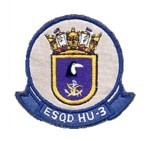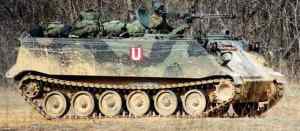#4695
Mensagem
por Reginaldo Bacchi » Qui Mai 19, 2016 1:46 pm
Continuando com outro trecho de “Strykers in Afghanistan”:
Equipment and Technology
While the Stryker vehicle offered 1-17 IN a significant amount of tactical mobility, the Buffaloes also found that they could become a liability. In multiple cases, vehicle recovery became a major tactical operation. In training the battalion’s Soldiers had always towed damaged Strykers with Stryker Recovery Vehicles, using tow bars to connect vehicles. In Afghanistan, they dealt with overturned vehicles, vehicles without tires, and vehicles on fire. After relying on the Canadians for vehicle recovery, Major Jennings eventually obtained a flat-bed truck and wrecker, and
trained some of his maintenance personnel in their use. Despite this, recovery usually took 24 hours. The enemy almost invariably targeted the Americans securing an inoperable Stryker, forcing them to fight a defensive battle. A damaged Stryker fixed a unit in place until it could be recovered. Like a beacon, a Stryker on fire at night invited enemy attack.
Lieutenant Colonel Neumann told the helicopter pilots supporting 1-17 IN that they needed to treat a damaged Stryker like a downed pilot. “You need to come running with helicopters,” he told them, “and you need to stay with us until we get those vehicles loaded on a truck and we drive away.”
The Land Warrior system helped Soldiers maneuver across the battlefields and allowed them to pinpoint friendly units. When Captain Pope mistakenly almost called mortars onto his own location, the battalion was able to check his position with Land Warrior and prevent a catastrophe. “Despite how heavy and awkward it was to wear, this incident sold me on the benefits of Land Warrior System,” explained Lieutenant Colonel Neumann. The men, however, did not like the device’s 12-pound weight and battery life of just eight hours. When the Buffaloes first arrived in country, the extra batteries were lost, leaving the men to carry their systems around for days without power. The system also stuck out about six inches from a Soldier’s back and chest. When combined with other equipment, entering and exiting Strykers’ hatches became difficult.
The system was never designed to provide perfect situational awareness of terrain or enemy dispositions. When Captain Pope used it to flank the enemy at Shuyen-e Sofla, for example, the maps could not detect enemy barricades, impeding his scheme of maneuver. Despite this wellknown and accepted limitation, Land Warrior had other maddening flaws.
When the system was not run down from overuse, for example, it still might turn off at inconvenient times. In one case during OPPORTUNITY HOLD, the Land Warrior equipment shut down on the men of Chosin Company’s 2d Platoon while they were trying to find 3d Platoon’s position in the dark. “We couldn’t see anything anymore,” explained Specialist John Diaz, “nothing was on our screens, nothing whatsoever.”22 At least some of these problems were caused by Land Warrior’s design as a lineof-sight system. Major terrain features and distances blocked or degraded its signal, a tremendous shortcoming in anything other than ideal terrain.
Major Jennings contended that there might be a relatively straightforward solution to this shortcoming: “If it was satellite based, that would be ideal, because you would never be out of contact with your other personnel.”
The Insurgency in Southern Afghanistan
Like most US Army maneuver units that deployed to Afghanistan, 1-17 IN conducted a campaign that combined non-lethal actions to further the legitimacy of the Afghan government (and its security forces) with lethal operations against insurgent forces. In the Shah Wali Kot and Arghandab districts of Kandahar Province, the campaign waged by the Soldiers of 1-17 IN leaned decisively toward lethal actions against a shadowy foe.
The Stryker battalion certainly brought more firepower to the battlefield than the Taliban could muster. The insurgents responded by avoiding pitched firefights whenever possible. “They couldn’t fight us in a small arms fight,” explained Captain Joshua Glonek, “they had to defeat us with IEDs.” 24 Especially in the Arghandab, the battlefield was heavily shaped by IEDs. The magnitude of the IED threat was made clear just days into the 1-17 IN’s operations when an IED detonation flipped over Captain Hallet’s Stryker. By the fall of 2009, insurgents in the Arghandab had enjoyed years of freedom to experiment with trigger systems and explosive charge sizes needed to catastrophically destroy a medium armored vehicle, an effort that started when Canadian forces began operating with LAVs in the valley in 2006. Medium armored vehicles may have been new to the US Army, but not to Afghanistan. The insurgents in Kandahar Province were able to create large IEDs partly because of their development of homemade explosives (HME). This meant that the IEDs in Afghanistan were far more lethal to the Stryker vehicles than those encountered in Iraq.
Taliban IED tactics were very sophisticated, even if the devices themselves were not. The insurgents constantly came up with new ideas for IED placement, often in response the tactics and techniques used by the Buffaloes. Captain Glonek recalled, “every measure we would take to kind of counter something they were doing, they would come back with something else.” Once the Americans had discerned a particular
method of triggering, the enemy developed a new technique, such as placing pressure plates a few meters in front of an IED so a mine roller would pass over the explosives and trigger the pressure plate, detonating the bomb underneath the Stryker. Insurgents also learned to trigger IEDs in the middle of Stryker columns, where a commander was most likely be located.
The IED threat also affected dismounted tactics in significant ways. The Buffaloes began to question every path they took. They had to assume mines were planted at every choke point, every footpath, every gate, and every bridge. This often meant taking a less direct path over walls, through dense vegetation, or through canals, routes that exhausted the Soldiers in their heavy gear. Certainly, the IED threat disrupted maneuver. But the junior leaders in the battalion adapted quickly. As Lieutenant Colonel Neumann put it, much of the reaction was mental: “You’ve got to think: ‘What’s [the enemy] trying to stop me from doing? It’s not random. That’s what you unravel: what was the enemy trying to do?”
Bacchi







